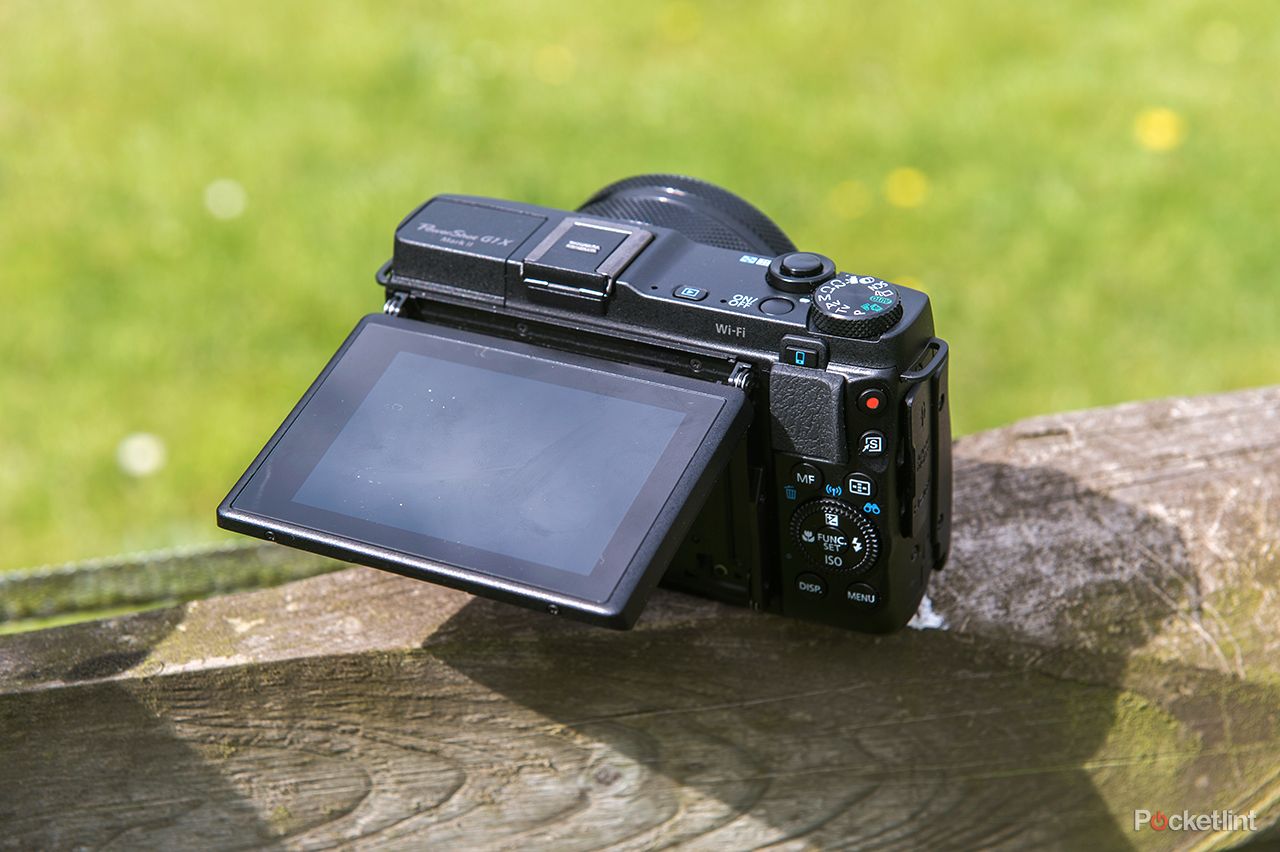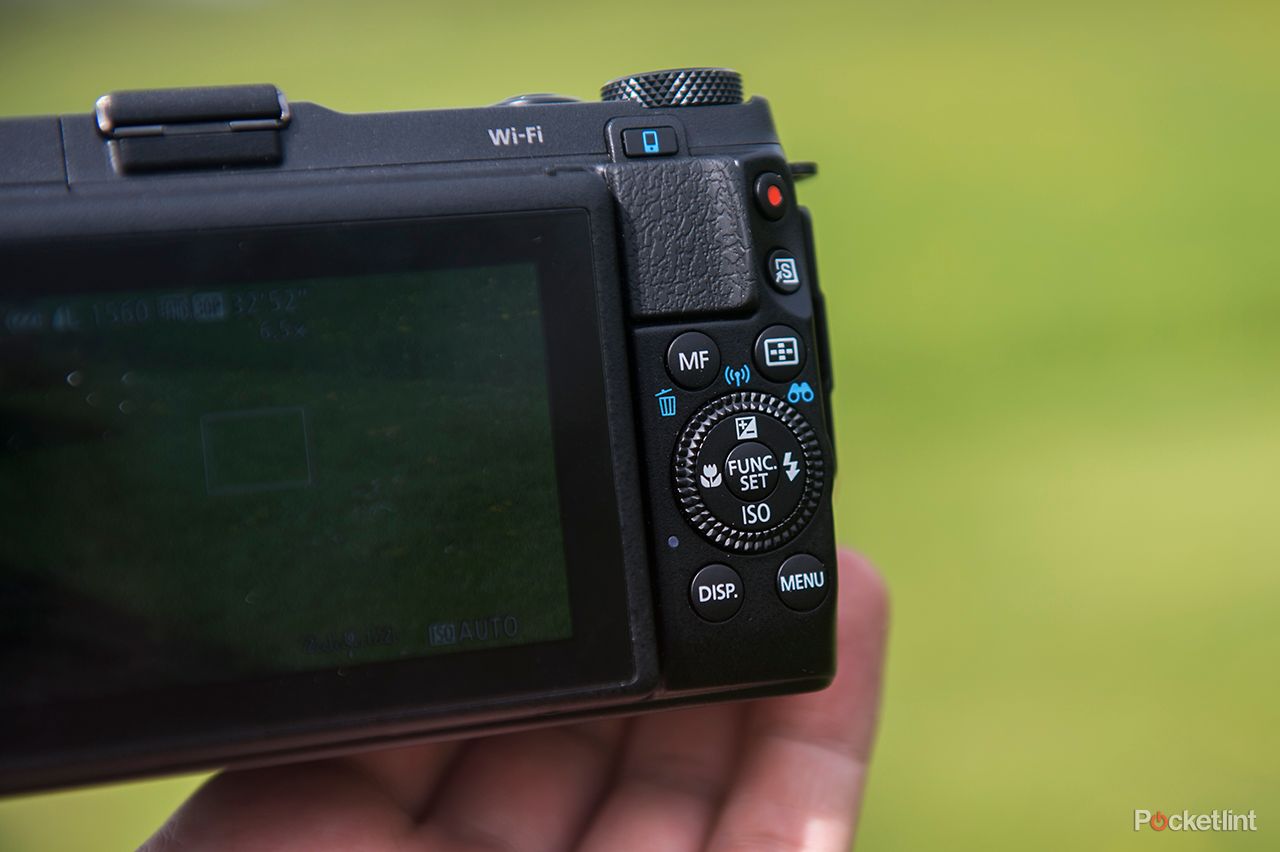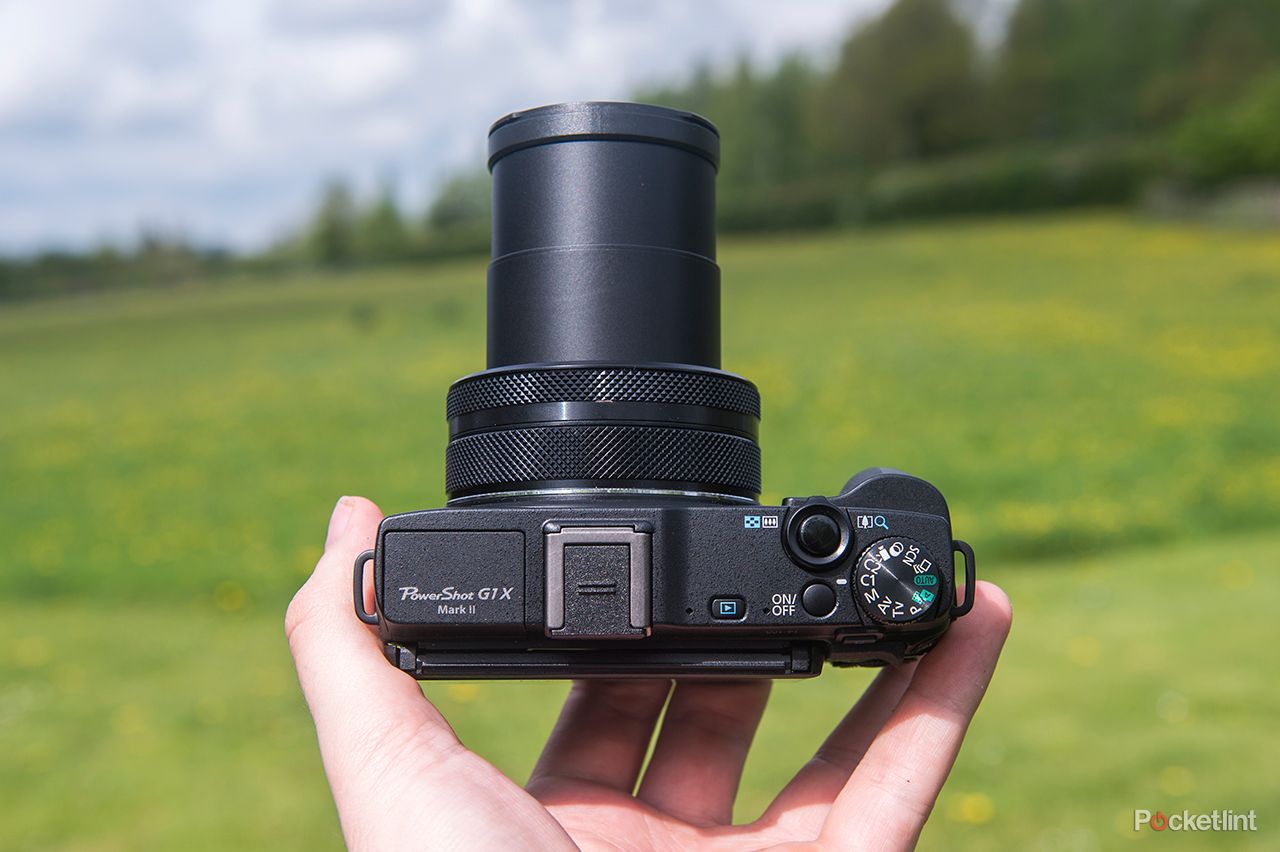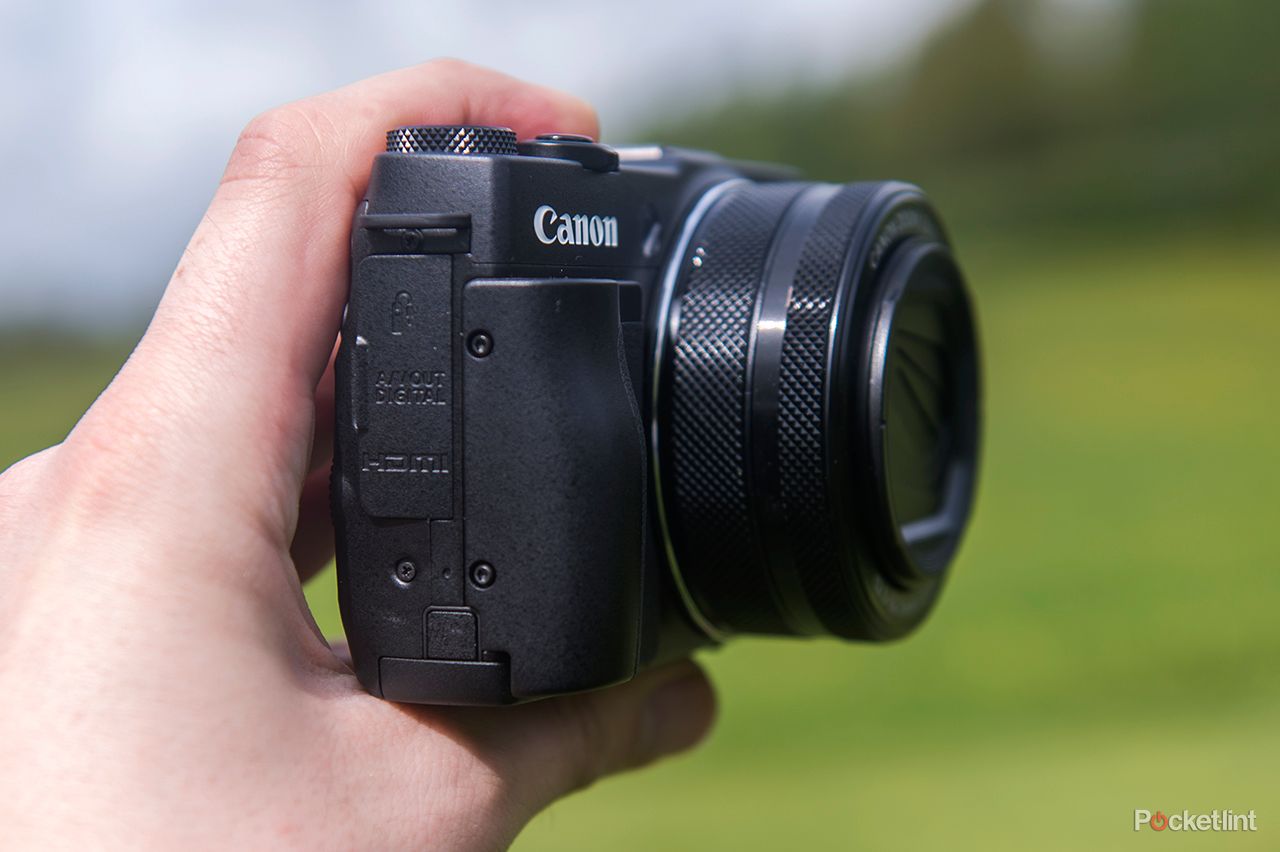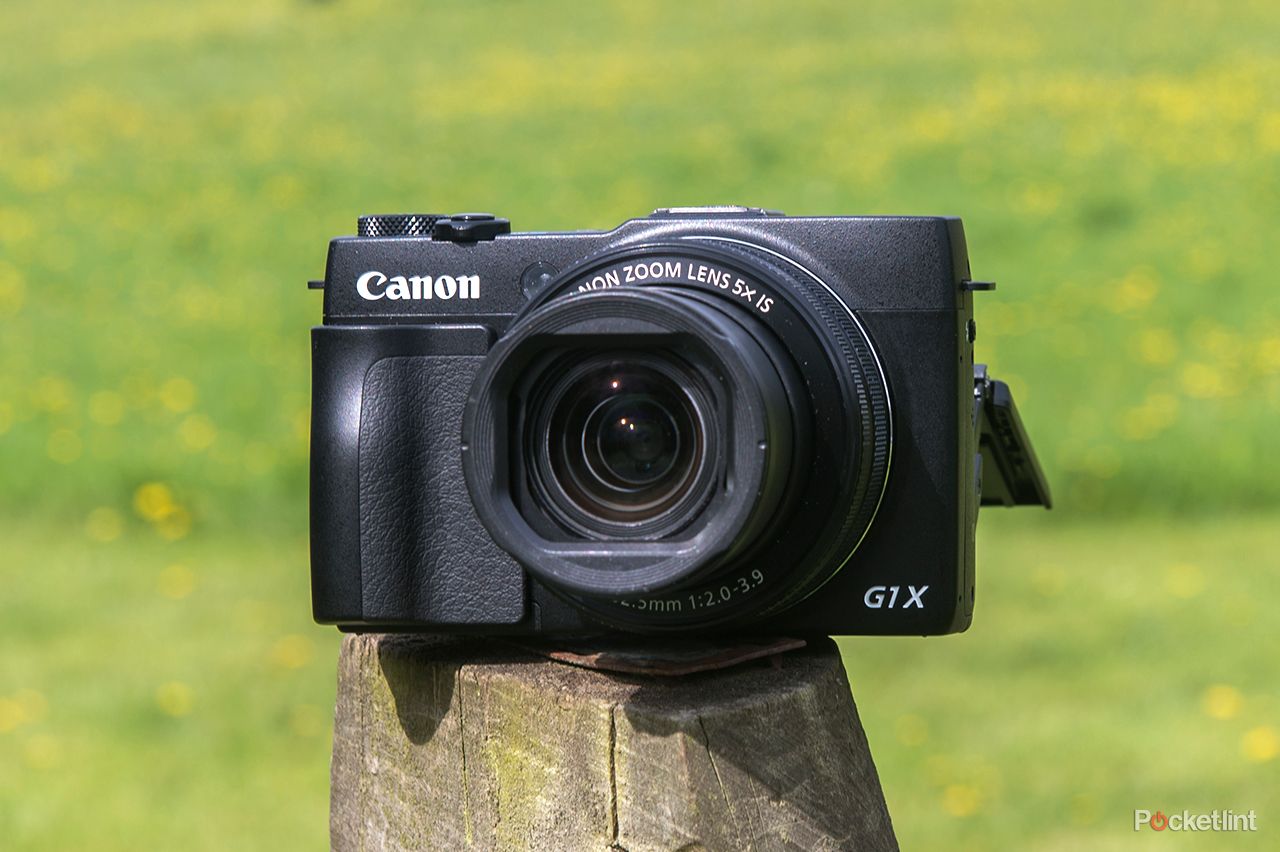The Canon PowerShot G1 X Mark II is the company's highest spec compact camera yet, superseding the original G1 X from 2012. Far from being a straightforward rehash of the earlier large sensor model, the Mark II is a total rework. It's built around a whole new design for starters, complete with a new lens and faster autofocus than before.
Our quick take
Faster, leaner, meaner: the Canon PowerShot G1 X Mark II represents a considerable overhaul to the series. It's an entirely different beast compared to its predecessor and we salute it for that.
But if you want premium image quality then you'll have to pay top dollar - there's no escaping the huge expense the G1 X II demands. And there are still some niggles such as the chunky size, limited battery life, the absence of a viewfinder and performance when shooting moving subjects feels far more compact-like than DSLR-like.
Other moans are few and far between though. The premium build, dual lens rings, considerable customisation, sharp lens and raft of improvements compared to the first generation model see the Canon fill a gap somewhere between the Sony RX100 II and the Sony RX1. And in that sense it's an untouchable camera that exists in its own little world. It's still a camera largely for the imaging elite, but it's an undeniably impressive bit of kit.

Canon PowerShot G1 X MkII - 4.5 / 5
| FOR | AGAINST |
|---|---|
|
|
Canon PowerShot G1 X MkII
No longer is there a built-in viewfinder as found in the original model - instead there's a hotshoe for adding accessories. But you'll need deep pockets if you want to fork out for the electronic viewfinder accessory as the G1 X II is expensive. Really expensive. Priced at £799, that expands to a lofty £999 with the viewfinder bundled in.
Do big bucks make for a big bang camera, or is the G1 X Mark II a reflection of the original; able to capture fantastic quality images but somewhat limited by its overall performance and price point?
Bulky build
Key to the G1 X Mark II's design is its large 1.5-inch sensor. Although you won't see it by eye as the lens is fixed to the body, it's roughly the same size as the sensors used in Canon's APS-C DSLR ranges. The difference is that it's a 4:3 aspect ratio and therefore not as wide.
A large sensor means a larger camera and lens, hence the G1 X II's not inconsiderable 116 x 74 x 66mm scale. It's not a great deal bigger than the likes of the Canon PowerShot G16, however, so it can almost be thought of us a high-end version of that camera in many respects.
READ: Canon PowerShot G16 review
The G1 X II's lens comes complete with two lens control rings: farthest forward is a smooth-rotating smaller ring, ideal for manual focus, behind which sits a larger click-stop ring, ideal for aperture control and the like. These metal lens rings always protrude from the front of the camera and the lens extends out from them when the camera is switched on.
Custom controls
Both lens rings are brilliant in use, with just the right weight and resistance. They each have a heavily textured grip finish to ensure ease of operation, with the front ring including a smooth section to differentiate it from the rear ring. That means without looking you can feel your way to the correct one, and as both are customisable per shooting mode you might have set the front ring to a different setting for aperture priority mode than in shutter priority, for example.
The rear rotational d-pad adds another twist to these customisation options as it's multi-functional. Click the d-pad's up direction to access exposure compensation, as marked on the camera's body with an icon, and this is adjusted via the rear lens ring. That can feel a bit alien at first. After making a compensation adjustment the d-pad selected setting will remain in play by default - you'll not escape the setting via the menu or any other button, but specifically by pressing the d-pad up key again to toggle back to the original setting. In some modes there will be three settings to toggle through, such as aperture, exposure compensation and ISO for example. And we found that perpetually annoying, simply because we would often leave exposure compensation in play without meaning to and end up with -1EV rather than stopping down the aperture.
There are stacks of additional custom controls. Whether you want to trim the number of options available in the Func Set quick access menu, or assign the S and Movie function buttons with specific tasks then you can. The one-press function buttons can only be set with one task per all shooting modes, though, not specific settings for each shooting mode as possible with the lens control rings.
Touchscreen controls work right across the board too, so if you don't want to scroll five icons to the right using the d-pad then simply apply a finger and, voila, setting selected. We didn't find ourselves using the touchscreen for this purpose much - must be old habits - but we can see the appeal.
New lens
The 24-120mm f/2.0-3.9 equivalent lens found in G1 X II marks some important changes. Canon has recognised the need for not only a wider-angle lens - it's now a 24mm equivalent rather than 28mm - but one with a greater zoom, faster maximum aperture range throughout, and the optics can cater for shooting subjects up close. Or at least closer than in the last generation model. The continuous image stabilisation is pretty nifty too, so it's an all-round raft of improvements.
Canon PowerShot G1 X Mark II review - sample image at ISO 100 - click for full size JPEG crop
Macro mode in the Mark II generally works twice as close to the lens compared to the original G1 X: 10cm macro is possible at the 28mm equivalent, while the new widest-angle 24mm equivalent means focus as close as 5cm from the lens is possible. Extend the lens to its maximum 120mm equivalent and you'll see 40cm close-up focus possible. We still wouldn't call it true "macro" (because it isn't) and it still frustrated us at times for being more limited than some smaller sensor competitors, but it's a big step ahead of where the series was prior.
Aperture values in high-end cameras are of key importance, with creatives wanting wider apertures for maximum control. The G1 X II delivers an f/2.0-3.9 maximum, which paired with that large sensor means melty blurred background bokeh is achievable throughout the range. Again it's an improvement compared to its predecessor, which maxed out at f/5.6 at the top-end of its (shorter) zoom.
Just be careful when using the maximum apertures in macro mode because it's not possible to take a sharp picture. It's the same issue the Fujifilm X100S has, but is overcome by stopping down or shooting the subject at a greater distance from the lens. In the Canon there doesn't appear to be any warning to not use the maximum aperture settings for very close-up shots, whereas in the Fujifilm the settings turn red to signify.
READ: Fujifilm X100S review
Overall the G1 X Mark II's lens is impressive considering the sensor size, marking an obvious improvement in the series. It maintains a wider maximum aperture at the top-end of the zoom than Sony RX100 MkII, for example, but then the Canon is a more sizeable wedge of camera.
READ: Sony Cyber-shot RX100 Mark II review
Performance push
When it comes to autofocus performance the G1 X Mark II is a considerable jump ahead of its predecessor. We were surprised how slow the original model was in the order of things considering its hefty price tag, so it's almost a relief to see performance accelerated to 2014 standards this time around.
We've been shooting with the G1 X in a variety of conditions and have been impressed with the speed at which focus is acquired across the board. Well lit conditions result in near instant focus, while darker conditions mean a slight slowdown much of the time, but focus is still reliable enough.
Canon PowerShot G1 X Mark II review - sample image at ISO 400 - click for full size raw crop
The only real caveat to that is when shooting moving subjects. We've been somewhat spoilt recently with the professional Nikon D4S DSLR, so have been able to shoot anything moving at almost any speed. We weren't expecting the G1 X II to deliver such performance - it's £4,500 less cash, for starters - but moving subjects can be tricky for it to tackle. There's also an ever so slight delay in the shutter firing as we found when shooting a singer belting out some vocals.
READ: Nikon D4S review
The inclusion of touchscreen controls are really handy for both autofocus and manual focus options to quickly position the focus area on screen. The entire screen is available rather than just a centralised section, and the touch functionality operates with both the single point or auto face detection options. That's not exactly a raft of focus options, but single point is our go-to option on any camera, so we didn't really miss anything more complex. A more refined pinpoint scale would have been welcomed though, something similar to the Panasonic Lumix GH4.
READ: Panasonic Lumix GH4 review
Manual focus
The variety of manual focus options also work really well, in part because that lens control ring glides along like a floating sheet of silk. Hit the one-touch MF button to the rear of the camera and all other ring presets are overridden so there's no clash with existing customised settings. Within the menus it's possible to set the manual focus on-screen magnification to either 2x or 4x to help assist with focus and there's a peaking function available to highlight in-focus subject edges too.
Manual focus doesn't have to be used in its dedicated mode, however, with an AF + MF option opening up the lens control ring to manual focus. The front ring controls manual focus only once autofocus has locked onto the subject and the shutter remains half pressed. Release the shutter and the lens rings reverts to act in its default mode.
This AF + MF option is something we would recommend using when shooting more complex subjects - such as the variety of depth blossom and tree branches with the aperture wide open - as we did find the generalised single point autofocus might find its preferred focus, but a subtle manual tweak might then be necessary to establish focus exactly where you want it.
Viewfinder options
Let's face it: the viewfinder in the original G1 X wasn't great. And that's being kind. It was more in the way than particularly useful much of the time. Which explains why Canon has amputated it from the Mark II model.
It's gone, replaced instead by a hotshoe should you want to fork out £200 for the EVF-DC1 accessory viewfinder. Despite the viewfinder absence the Mark II demands a more premium price tag on account of its other improvements, namely the lens. Priced at £799 it's £100 more than the earlier model, or a cool £999 with the viewfinder added on. Might as well call it a grand then.
Canon PowerShot G1 X Mark II review - sample image at ISO 2000 - click for full size JPEG crop
We've used the DC1 viewfinder for around half an hour prior to this review and found in really useful. Since taking delivery of the G1 X II at home for review, minus the finder, we've certainly missed its presence. That 1.44m dot panel might not be the highest resolution available to market, but there's just a natural process to framing when using it and it'll prove useful in bright sunlight too.
Without the viewfinder available it's down to the 3-inch, 1,040k-dot LCD touchscreen to take pride of place. And this time it's got the added trick of a tilt-angle bracket which we've been using loads for waist-level work. As the G1 X II is somewhat large, it can be less conspicuous when shooting with it low down to the body.
The screen isn't resistant to sunlight, obviously, but as far as LCD panels go it avoids the worst of reflections, while the touchscreen aspect felt responsive in use.
Image quality
We were bowled over by the original G1 X and its image quality. The Mark II goes one better - the images from this camera are quite something considering it's "just a compact".
Part of that comes down to the feature set. The lens is bitingly sharp throughout (save for close-ups with wide apertures, as detailed earlier), while the available maximum apertures open the door for creative control. We've shot some wonderful shallow-depth-of-field images during our use.
Canon PowerShot G1 X Mark II review - sample image at ISO 200 - click for full size raw crop
The addition of Canon's Digic 6 processor means the 13.1-megapixel sensor (or 12.8MP when shooting 3:2 ratio due to the crop factor) has more processing grunt to manipulate how all that data is transformed into imagery. If you want every spec of detail then the 14-bit raw files may be your preference, as they offer as much control as a DSLR shot would in terms of dynamic range.
There's a fair amount of distortion correction in the JPEG files, but nothing to soften corners to excess. JPEG processing sees increased sharpness, although at the higher ISO settings we would have opted for a touch more grain over the smoothness rendered as a result of image processing.
Canon PowerShot G1 X Mark II review - sample image at ISO 125 - click for full size JPEG crop
Shoot from ISO 100-800 and shots have very little image noise to speak of. Place the G1 X II's shots next to a DSLR's output and you won't notice any difference. If anything the lens pairing makes it the compact the preferable solution of the two. It's really that good.
Image noise does increases as the ISO sensitivity rises - that's an inevitability - but with decent aperture control available we typically avoided shooting above ISO 3200 without too much of a problem. And even shots at that sensitivity look more than good enough.
At the very highest settings, with ISO 12,800 maxing out the options, things are a more stretched to their limits. But not awful. It's not numbers for numbers' sake as with the Nikon D4S's ISO 409,600, for example.
Battery, Wi-Fi and extras
Despite all this high-spec wonderment, the on-board battery is puny and delivers around 200-250 shots per charge. Canon's official figure is 240 per charge. We are often guilty of leaving the camera on in-between shots, hence not always getting the full quoted number - with live view always on, the camera is doing a lot of work.
Battery life is also tricky to monitor as the display bar is shown in thirds, rather than a more accurate percentage display. You never know when it'll drop from two thirds down to one third and then eventually cut out entirely, which is a bugbear we've had with many cameras for a long time.
Burst mode is also unsurprisingly limited, with 5fps available in JPEG only, or 1.4fps with raw only. But then with the limitations to continuous autofocus this is no surprise at all. We used bracketing for some tricky exposures, which we found to only be useful if the subject is still. Although we don't think this feature will really have any impact on the camera's potential audience. Besides, the G1 X II is quick when it needs to be: start-up is near instant, for example.
Lastly, there's Wi-Fi. It's the must-have camera feature of recent times it seems and in the Canon it's none too bad. Use it at the peril of battery life, though, and we're sure a bit of patience by extracting the SD card will suffice for many. We sit on the fence when it comes to Wi-Fi in cameras as most manufacturers haven't quite nailed this, save for Samsung.

